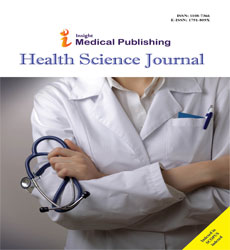Abstract
A Comparative Study of Maternal and Child Health Outcomes of Pregnant Women Living with and without Disability in kakamega County, Kenya
Objective: To assess the maternal and child health outcomes of pregnant women living with and without disability in Kakamega County, Kenya. Design: A population-based prospective case control study. Setting: The study was done in 12 Sub County in Kakamega County Sample: The study used a multistage probability sampling design to identify the sub counties that would be case and control groups and purposeful and snow balling sampling technique to identify the pregnant women living with disability who in turn identified an able-bodied pregnant woman that she is accessible to (n=196) Analysis: Data was analyzed through descriptive characteristic in which central tendencies and repeated measures ANOVA. Main outcome measures: Maternal and child outcomes before and after birth Results: Results for maternal outcomes 12 weeks into pregnancy showed that The study found that majority of the able-bodied (91.2%, n=31) and the disabled women (95.1%, n=98) did not have any vaginal bleeding, did not have severe abdominal pains (76.5%, n=26 and 84.5%, n=87), did not have paleness (94.1%, n=32 and 91.3%, n=94), neither severe headache or foul smell (88.2%, n=30 and 83.5%, n=94). The findings also showed that there were no significant differences in maternal outcomes amongst schedules one, two and three (f (1,135) =.256, p=.614, È 2 =0.002).In addition, there were significant differences between the able bodied and WLWD in a linear combination of maternal outcome observations from birth up to six weeks after delivery(Greenhouse-Geisser 1, 133 =.117, p=0.03, È 2 =0.246). There were also significant differences between the able bodied and disabled women in a linear combination of child outcome observations from birth up to six weeks after birth (f (1,133) =7.183, p=.008, È 2 =0.076) Conclusion. The study found out that maternal healthcare services lacked the flexibility and responsiveness to meet the unique maternity care needs of WLWD. The study recommends that further research should target the experience, use of services and needs of women with different and multiple disabilities from diverse groups, using qualitative as well as quantitative methodologies.
Author(s):
Consolata Namisi Lusweti, Peter Wisiuba Bukhala and Gordon Ochieng Nguka
Abstract | Full-Text | PDF
Share this

Abstracted/Indexed in
- Google Scholar
- Genamics JournalSeek
- China National Knowledge Infrastructure (CNKI)
- CiteFactor
- CINAHL Complete
- Scimago
- Electronic Journals Library
- Directory of Research Journal Indexing (DRJI)
- EMCare
- WorldCat
- University Grants Commission
- Geneva Foundation for Medical Education and Research
- Secret Search Engine Labs
- Euro Pub
Open Access Journals
- Aquaculture & Veterinary Science
- Chemistry & Chemical Sciences
- Clinical Sciences
- Engineering
- General Science
- Genetics & Molecular Biology
- Health Care & Nursing
- Immunology & Microbiology
- Materials Science
- Mathematics & Physics
- Medical Sciences
- Neurology & Psychiatry
- Oncology & Cancer Science
- Pharmaceutical Sciences

